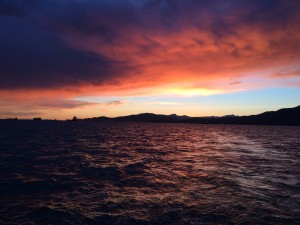As soon as I set foot in Rome on April 11th my heart was immediately captivated, and as I continued to explore new cities and towns throughout Italy and Europe I only fell deeper in love. My program traveled around to Rome, Florence, Siena and Bologna the first 2 weeks and then we settled into Vicenza, our home away from home for the next couple of months. And it truly did become just that. We became regulars at the café down the street from our apartments and our favorite self-serve restaurant. We spent our evenings on the terrace that overlooked the neighborhood piazza. We would frequent the grocery stores for group dinners on the weekends and kick around a soccer ball at the local park. Class was typically outside, drawing and taking notes and when we were inside we worked on our studio project redesigning a new building and Piazza for downtown Vicenza. Although we were finally settled in somewhere that did not mean that we were done traveling. Vicenza was a short train ride away from Venice and many other small Italian towns that we would go on day trips. Lastly, nearing the end of our time together in Europe our group went on a bus tour through Switzerland for week.
The entire 3 months that I was studying abroad I never ceased to be amazed by the architecture, art, religion, traditions and culture that seems to fill every nook and cranny of Europe. I like to think that Italy is an architect’s heaven on earth. Studying architecture there was incredible. I was able to see things in person that I had only seen in movies or text books. To be in the colosseum or the Vatican for example, places that I have spent so much of my life dreaming about was surreal. What’s more, those were only two of the countless buildings my classmates and I visited and each one, famous or not, was a masterpiece in its own wright.
to be amazed by the architecture, art, religion, traditions and culture that seems to fill every nook and cranny of Europe. I like to think that Italy is an architect’s heaven on earth. Studying architecture there was incredible. I was able to see things in person that I had only seen in movies or text books. To be in the colosseum or the Vatican for example, places that I have spent so much of my life dreaming about was surreal. What’s more, those were only two of the countless buildings my classmates and I visited and each one, famous or not, was a masterpiece in its own wright.
Moreover, what lingers in my mind more vividly is the smaller details that make up the fabric of Italy: like the narrow cobble stone streets, the shutters, the laundry hanging outside of windows, the small alters for Mary and Jesus that are mounted on to the sides of buildings, soccer playing on the television, ordering a cappuccino, the smell of cigarette smoke, the smell of pizza being made and the lengthy greetings shared in Italian with the coming and going of every friend. These are the attributes of Italy that truly won my heart. I don’t miss the museums and the buildings, I miss getting lost in the streets of Italy and the people, sounds and smells that you run into along the way. Being immersed in a different culture is life changing. It opened my eyes to new possibilities. Traveling not only made me appreciate things about my life back in the U.S but also made me realize where  I see room for improvement.
I see room for improvement.
The people are also what last in our memories forever, more than the sites and tourist attractions. I didn’t know a single person in my program and by the end of my 3 months I can call every one of them a dear friend, including my professors. People with different backgrounds and lifestyles coming together over common interests in learning and exploring to create timeless friendships. I learned so much from each of my peers, my professors and the random acquaintances I made along the way. I feel a new sense of independence that I didn’t have before this trip. Now I have confidence in myself that I am capable of navigating the world, but this is thanks to the support and companionship of my new friends.
- Eden Haskins-Dahl, Architecture in Vicenza
![IMG_1810[2]](https://blogs.uoregon.edu/geostudyabroad/files/2016/07/IMG_18102-1ii87yj-300x225.jpg)
![DSC_7123[2]](https://blogs.uoregon.edu/geostudyabroad/files/2016/07/DSC_71232-1elmefk-300x201.jpg)










